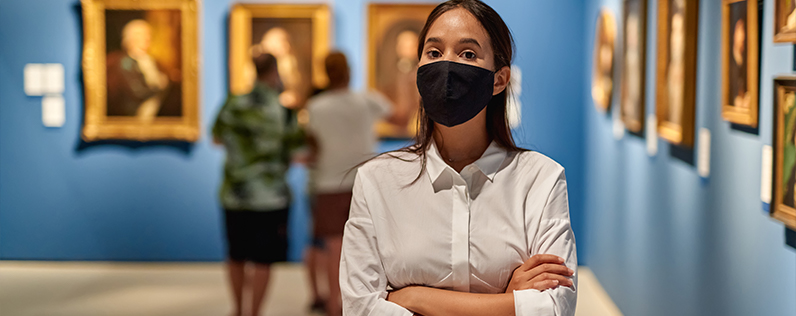
When I was traveling throughout the American Southwest, a friend suggested I head to a tiny town in the desert of southern California called Slab City. There, I discovered a 30-acre multimedia and interactive art museum, along with an off-grid artist community called East Jesus.
The work of these creative renegades was underwritten by donations of tourists who wandered through the museum’s outdoor art garden. But for those who stumbled upon the art, like me, the initial experience was one of confusion. Without a clear branding plan, it was challenging for them to increase the donations that support their art and keep the museum thriving.
To share a clear story of curated art and history, museum directors must implement branding guidelines to help visitors better understand their organization’s overarching message and vision for the future. What exactly does it take to create museum branding that can take your organization to the next level?
In this article, I’ll show you how to build a strong museum brand, including:
- The processes involved in museum branding
- 7 tips for successful museum branding
- Examples of great branding by museums
- How to take the next step in your digital marketing campaign
The processes involved in museum branding
If you already have a museum that’s been in operation for years, you may not think you need to build your brand. However, this is a proven way to increase donations and engagement within your community.
Branding is a three-part process, as we will discuss further below.
Creating a brand vision
What do board members, staff, and other stakeholders consider the vision and message of the museum? Working together to create a brand vision will help you articulate what makes the museum different from others in your niche or region.
Museums with history often fall back on “how we always used to do things,” but that isn’t a forward-thinking mentality. Don’t be scared to rethink how you’ve been sharing exhibitions and educational attractions with your visitors. Executing clear communication is at the very heart of a branding initiative.
Reconsidering your logo
The art museum in the desert that I discovered didn’t have a logo at all, which was part of why so many people had a hard time even believing it was a member of the California Museum Association. In terms of branding, logos are shorthand expressions of the messages, values, and visions of companies they represent — including museums.
While it will rarely stand alone in digital advertisements or social media marketing campaigns, creating a fresh logo should be a part of any branding effort.
Establishing brand guidelines
Brand guidelines are often collected in a document you create to make it easier to design advertisements, informational flyers, posters, and more. Deciding in advance on the fonts, color schemes, spacing standards, types of photographs, certain phrases, and more will help your team stay on message and ensure any outreach efforts are clearly expressing the museum’s brand.
7 tips for successful museum branding
When you’re ready to begin work on nailing down your museum’s brand, consider these best practices.
1. Start with the founders’ story
The East Jesus community started when a man named Charles Russel drove his art car — a VW Westfalia adorned with more than 20,000 decorations — to the property and started cleaning up old camps.
He and his friends found all kinds of interesting junk, and soon they were building kinetic structures, robots, art-adorned cars, and sculptures on the property. Russel’s irreverent sense of humor and live-and-let-live attitude is the backbone of the museum’s brand.
To better understand your museum’s brand, start with the founders’ narrative. Why did these people decide to create this art or follow this vision? Tell the story to tap into the underlying values of your organization.
2. Know your target audience
Who is coming to your museum now? Everything you do in digital marketing, such as email marketing, needs to be directed at the type of person you want to reach. Narrow down your target demographic, and then separate those people into different groups to hone in what your brand should look like.
For example, marketing materials for a children’s museum should be targeting young parents. A museum featuring delicate Fabergé eggs would have a very different look and feel. Think about the hobbies, geography, needs, and behaviors of your target audience to make sure they’ll notice your brand.
3. Simplify your logo
MoMA doesn’t often spell out its full name: the Museum of Modern Art. They’ve done the work to create a strong enough brand, so they can simplify their logo.
A common rookie mistake when rebranding is to create a busy logo that tries to do it all. Keep it simple. You don’t need a logo that tries to tell your entire story.
I once worked with a children’s agency that decided to include two hearts, an entire family of stick figures, their agency name, a tagline, and an artistic swoosh in their logo. For your museum, go for sophistication instead.
4. Educate your staff
Everyone needs to be involved in sharing the brand with current and future visitors. Once the decision-makers have agreed on branding guidelines, you must share the knowledge with your staff. Create a document that outlines how to share the mission of the museum consistently so everyone can be on the same page.
5. Share your vision for the future
As you develop your museum’s brand voice, consider your expansion or enhancement plans for the future. However your board imagines the museum growing, it should weave seamlessly with the current branding.
For example, East Jesus volunteers have been clearing additional land behind their art garden for an expansion project. Sharing this work with their visitors encouraged more donations to underwrite the important work and shed light on why living in harmony with the land was so important to the vision.
6. Find your brand ambassadors
Of course, your volunteers are likely your most vocal ambassadors. But that’s just the beginning. People who know and love your exhibits will want to share your brand and vision with their friends and family, so make it easy for them.
Create an ambassador or VIP program to engage those who already appreciate your brand. Share your brand guidelines and specific requests — such as reposting your social media posts in exchange for exclusive invitations to openings, for example — with your ambassadors.
7. Be realistic with your branding goals
Finally, recognize that museum branding is a long-term solution to raising awareness and support for your establishment. Be realistic with goals and expectations as you create a vision for future marketing.
That being said, come up with measurable goals so you can gauge success and budget appropriately.
Examples of great branding by museums
Here are some museums with successful brands to inspire you.
National History Museum
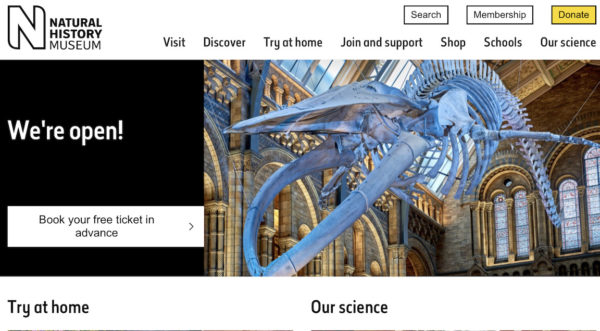
New Museum
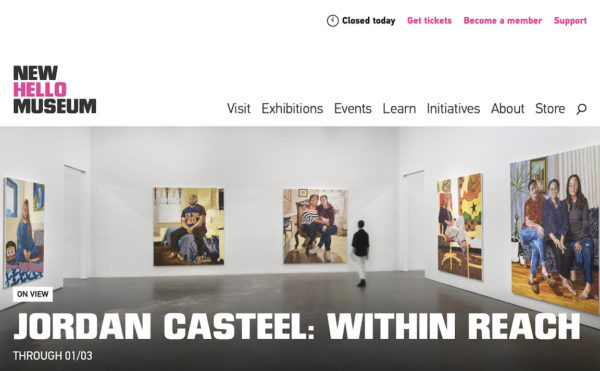
Asian Art Museum
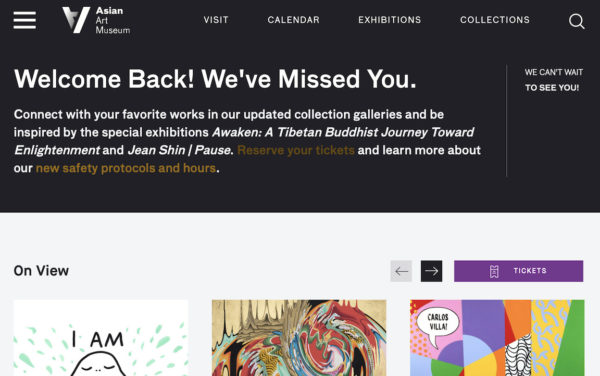
Jewish Museum
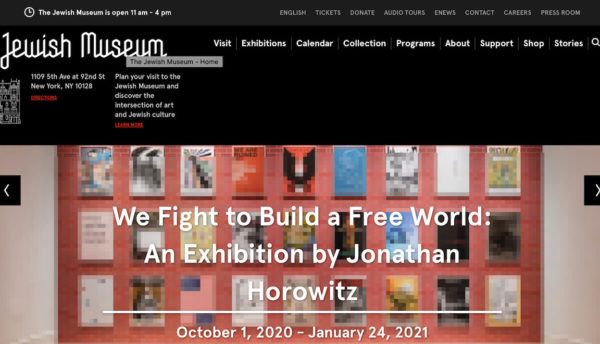
Cooper Hewitt, Smithsonian Design Museum
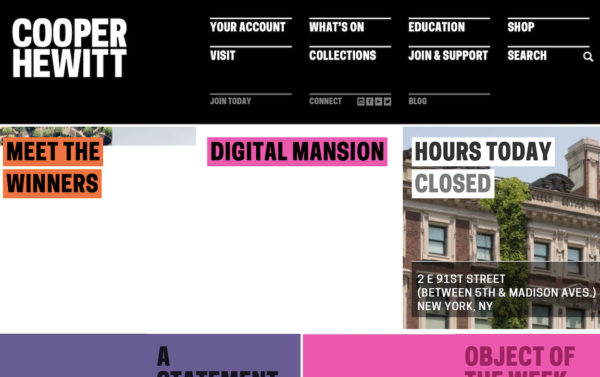
How to take the next step in your digital marketing campaign
Learn more about arts marketing with Constant Contact’s The Download. This free guide gives step-by-step instructions for improving your brand and increasing visits.




